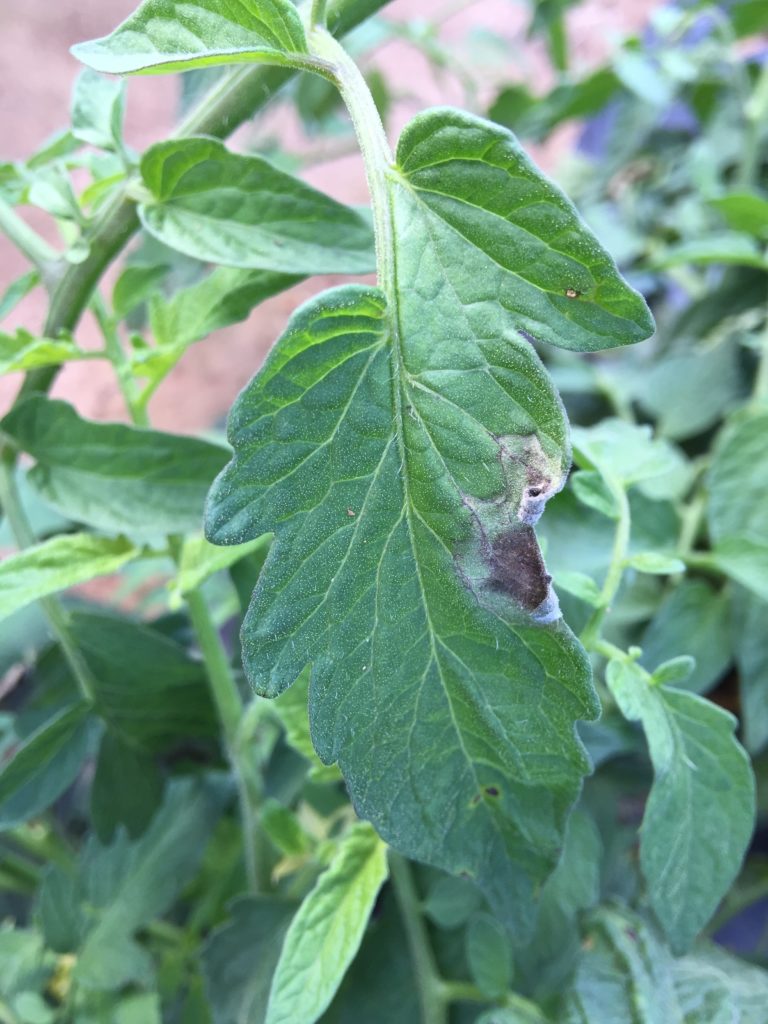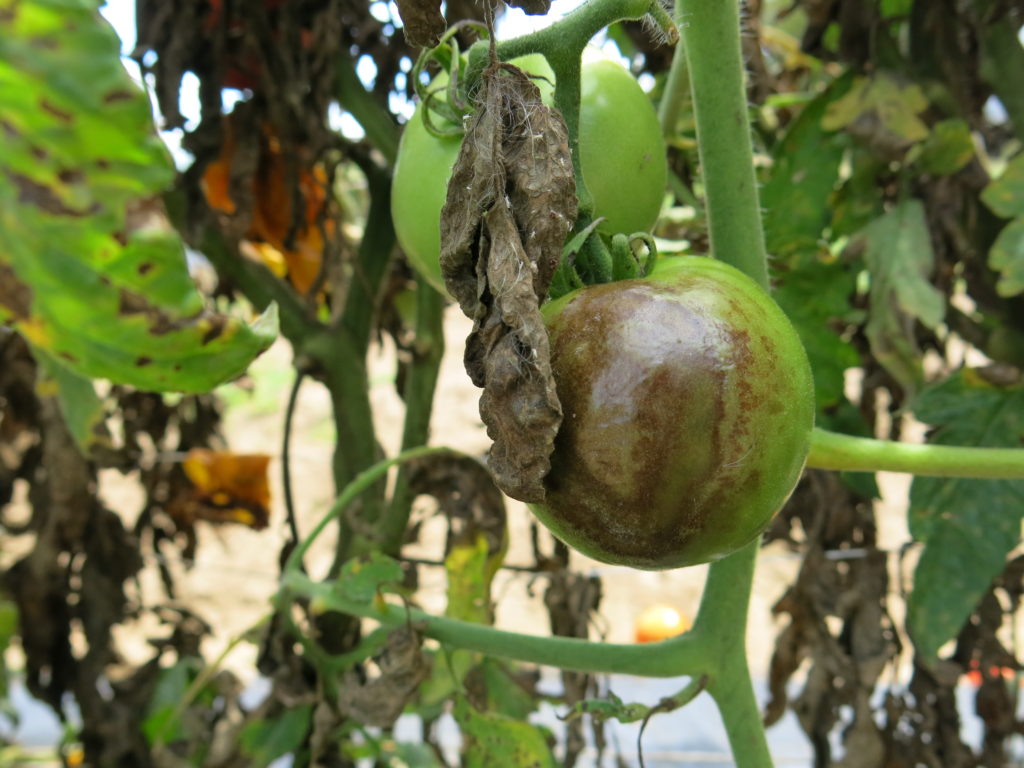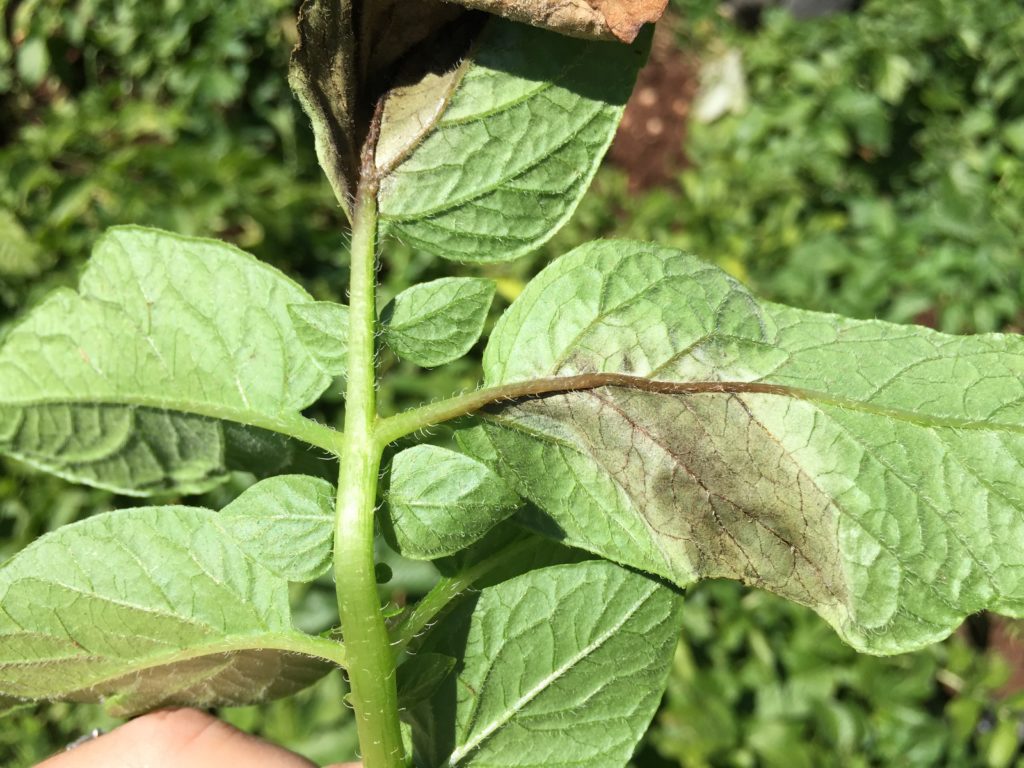Scout for Late Blight on Tomato and Potato
go.ncsu.edu/readext?701327
en Español / em Português
El inglés es el idioma de control de esta página. En la medida en que haya algún conflicto entre la traducción al inglés y la traducción, el inglés prevalece.
Al hacer clic en el enlace de traducción se activa un servicio de traducción gratuito para convertir la página al español. Al igual que con cualquier traducción por Internet, la conversión no es sensible al contexto y puede que no traduzca el texto en su significado original. NC State Extension no garantiza la exactitud del texto traducido. Por favor, tenga en cuenta que algunas aplicaciones y/o servicios pueden no funcionar como se espera cuando se traducen.
Português
Inglês é o idioma de controle desta página. Na medida que haja algum conflito entre o texto original em Inglês e a tradução, o Inglês prevalece.
Ao clicar no link de tradução, um serviço gratuito de tradução será ativado para converter a página para o Português. Como em qualquer tradução pela internet, a conversão não é sensivel ao contexto e pode não ocorrer a tradução para o significado orginal. O serviço de Extensão da Carolina do Norte (NC State Extension) não garante a exatidão do texto traduzido. Por favor, observe que algumas funções ou serviços podem não funcionar como esperado após a tradução.
English
English is the controlling language of this page. To the extent there is any conflict between the English text and the translation, English controls.
Clicking on the translation link activates a free translation service to convert the page to Spanish. As with any Internet translation, the conversion is not context-sensitive and may not translate the text to its original meaning. NC State Extension does not guarantee the accuracy of the translated text. Please note that some applications and/or services may not function as expected when translated.
Collapse ▲With the current temperatures in the 60’s and 70’s and cloudy skies, conditions are conducive for late blight to occur on tomato and potato. In fact, late blight has been reported on potato and tomato in Alabama recently. Typically, we don’t see late blight on tomato until late summer, but because conditions are conducive, it’s a good idea to scout.
Late blight is caused by the oomycete Phytophthora infestans. It is a fungal-like organism that is particularly good at spreading through air currents. Cool, wet conditions favor this pathogen, if it is present in the area. On tomato and potato, it can be extremely aggressive under these conditions, so it is important to apply preventative fungicides or use resistant varieties. Symptoms on tomato include light brown lesions sometimes with a light green halo. Lesions will attack new growth first, but all parts of the plant, including fruit, can be affected. More information can be found on the tomato late blight and potato late blight disease factsheets.
If you suspect late blight on your crop, contact your local County Extension agent. You can also send samples to the NC State University Plant Disease and Insect Clinic.





